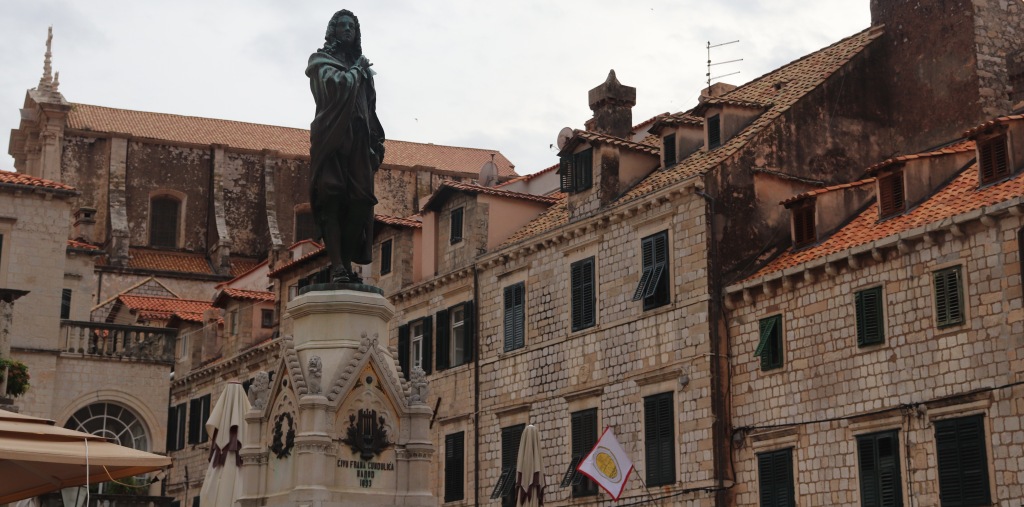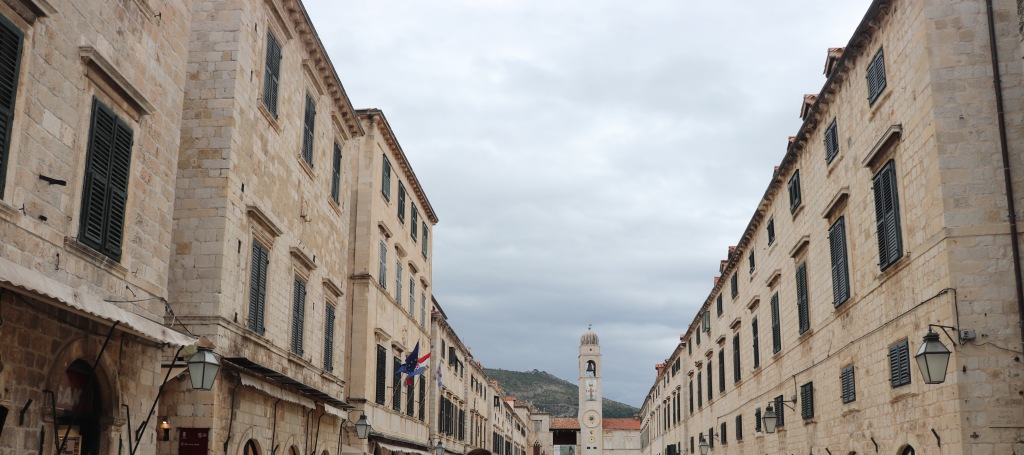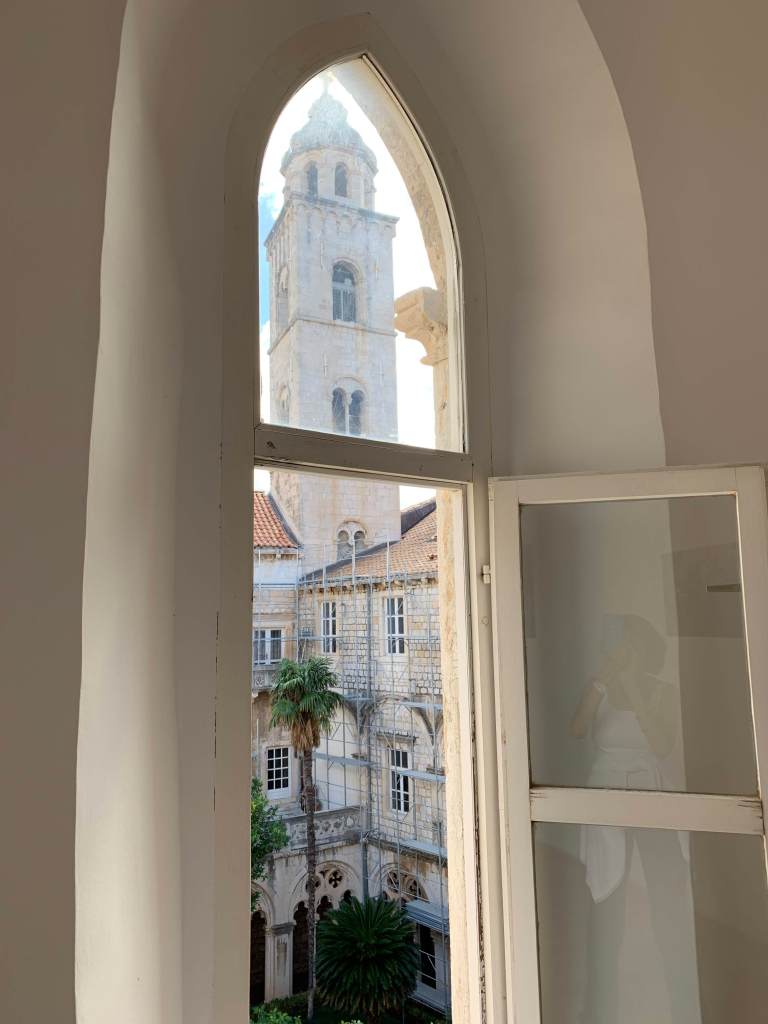
I co-teach a newly created interdisciplinary course with Professor Kristin Comeforo at the University of Hartford (“Systems of Oppression: Our Binary Code”) for which I am trying to set up a customized study abroad experience here in Croatia. I’m connecting with scholars, organizations, and activists who are addressing gender issues, one of my main interests. Nada Raic and Ivana Bajurin (resident directors at Libertas University who I introduced in my last post) connected me to Vesna Barišić who is one of the few people who grew up and remains living in the Old City (there are only about 900 people). She gave me a personalized three hour tour (!) of Dubrovnik. She has a great interest in how women, Jewish, and other marginalized groups were regarded historically. If you would like a tour or better understanding of minority groups in Dubrovnik, I highly recommend that you take a tour with her. I was taking notes like mad—I couldn’t keep up with her! I’ll highlight a few things that I learned from her.
Not surprisingly, a woman’s sole purpose in Dubrovnik during the 13th-17th century was to get married and have children. Marriages, of course, had nothing to do with love but everything to do with producing heirs. Girls as young as 7 or 8 were already “engaged” and married by the time they were about 15, usually to a man who was twice their age. Prior to the 15th century the bride didn’t even have to be at her own wedding—only the two fathers were required to be present. After all, marriage was an economic exchange and families could afford only one dowry that went along with the eldest daughter. The younger daughters were put into a convent (there were seven convents within the city walls) if they were under the age of 12. Since 12 was the age of consent, girls older than that had to give their consent before entering a convent.
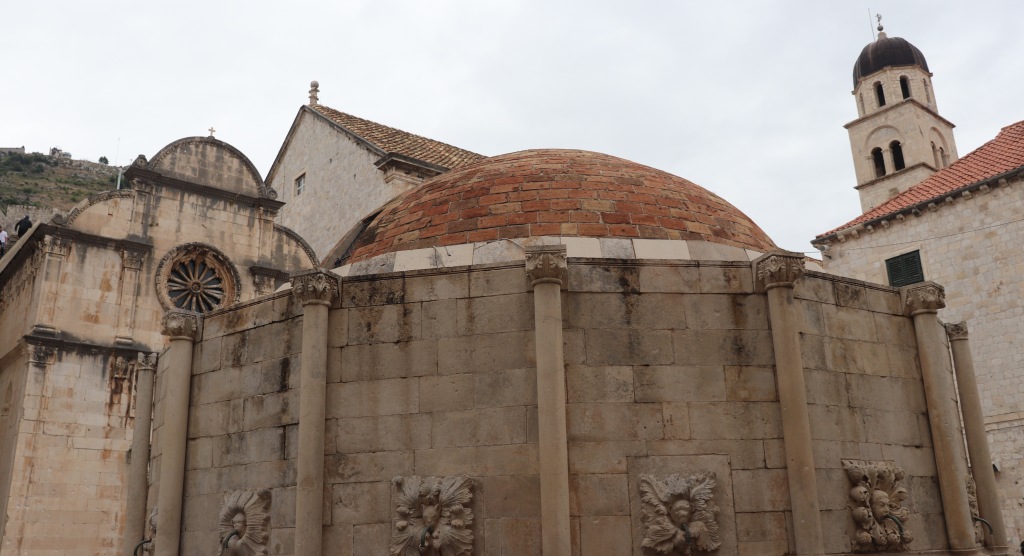
There were no graveyards so families living within the city walls had to be buried there. Nobility could afford to build their own church next to their house so that they could be buried together. Women died often in childbirth so it was normal for a man to remarry several times. Like me, you might be wondering what happened to all his wives who died in childbirth? Since he probably had many wives, they may have been buried, but their names were never recorded on a headstone. This lack of recognition was partly due to the fact that it was not her family name, but her husband’s. Can you imagine how many women have literally been erased in this way? This lack of identification is likely the case for millions of people who have been systematically wiped out after being buried in mass graves due to war, natural disasters/famine, crime, the holocaust, refugees lost at sea…).
Girls were never educated, even those from wealthy families (this changed in the 1500s). A girl was not allowed to look through the windows of her house because she might be seen from the outside; this was considered indecent exposure for which she could be punished. It makes me wonder if the shutters over the windows so typical of the architecture here have anything to do with preventing girls and women from being seen. There is an impressive stone balustrade leading to the Dominican monastery. At some point, it was partially walled up so that when women walked up the ramp, their ankles would be hidden from sight. Women could only leave her home for two reasons: 1) to visit relatives and 2) to attend church. I suppose the fact that there are 30 churches within the walls of the Old Town is a good thing because, as Vesna suggested, women went to church a lot as it was the only way they could gather with other women—to connect, chat, and exchange news.

The streets of Dubrovnik are named either for their characteristics/locations or are named after well-known men. There is only one street in the town that is named after a woman—Ulica Cvijete Zuzorić—and it’s only because of her “scandal”. She was born in Dubrovnik in 1552 (at that time, it was called The Republic of Ragusa). Her father was a merchant and the family moved to Ancona, Italy where she was educated. She was a lyric poet who wrote and spoke Croatian, Italian, and Latin. She married an Italian nobleman who was appointed to be Florence’s ambassador to Ragusa. The couple would host gatherings in their home for artists and scientists for discussions. After her husband died, Cvijete was severely criticized (and most likely envied for her freedom) for continuing to hold such gatherings which were well-known in the literary and artistic community. In 1974, the Croatian acoustic duo Buco and Srđan wrote a song dedicated to her: https://www.youtube.com/watch?v=Qjrm-C3Bv-0.
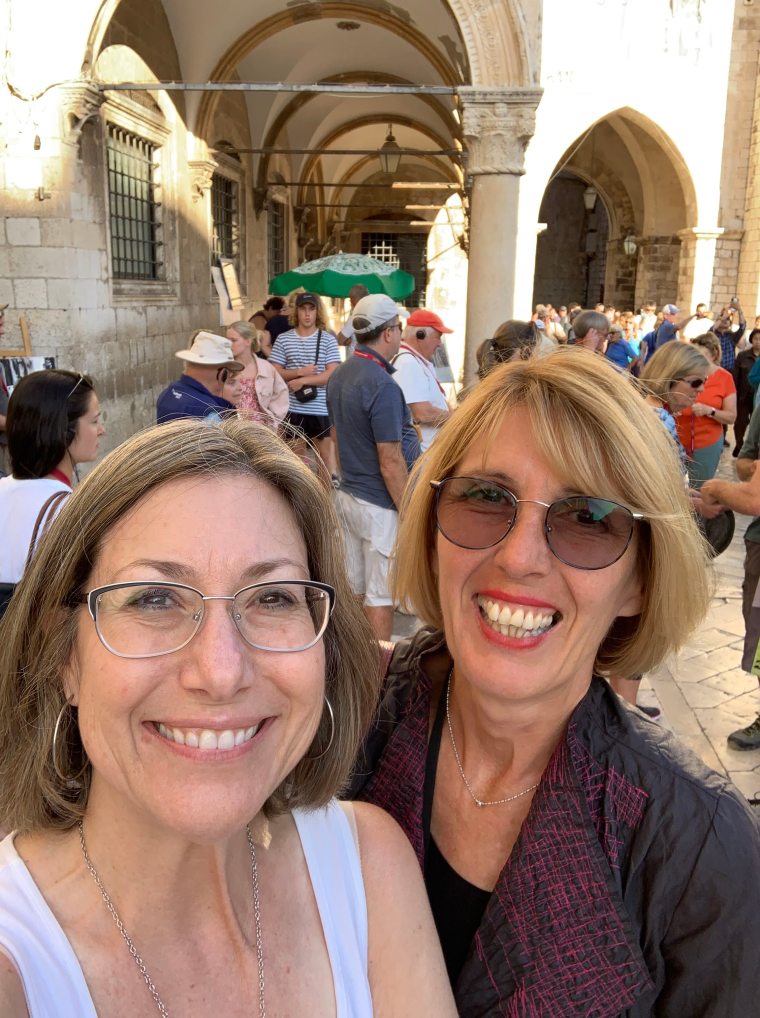
A walk with Vesna is a walk into a less well-known history of Dubrovnik, certainly an opportunity to hear the stories of those whose histories are hidden in the margins. I hope you will consider studying abroad here and walking with us.

